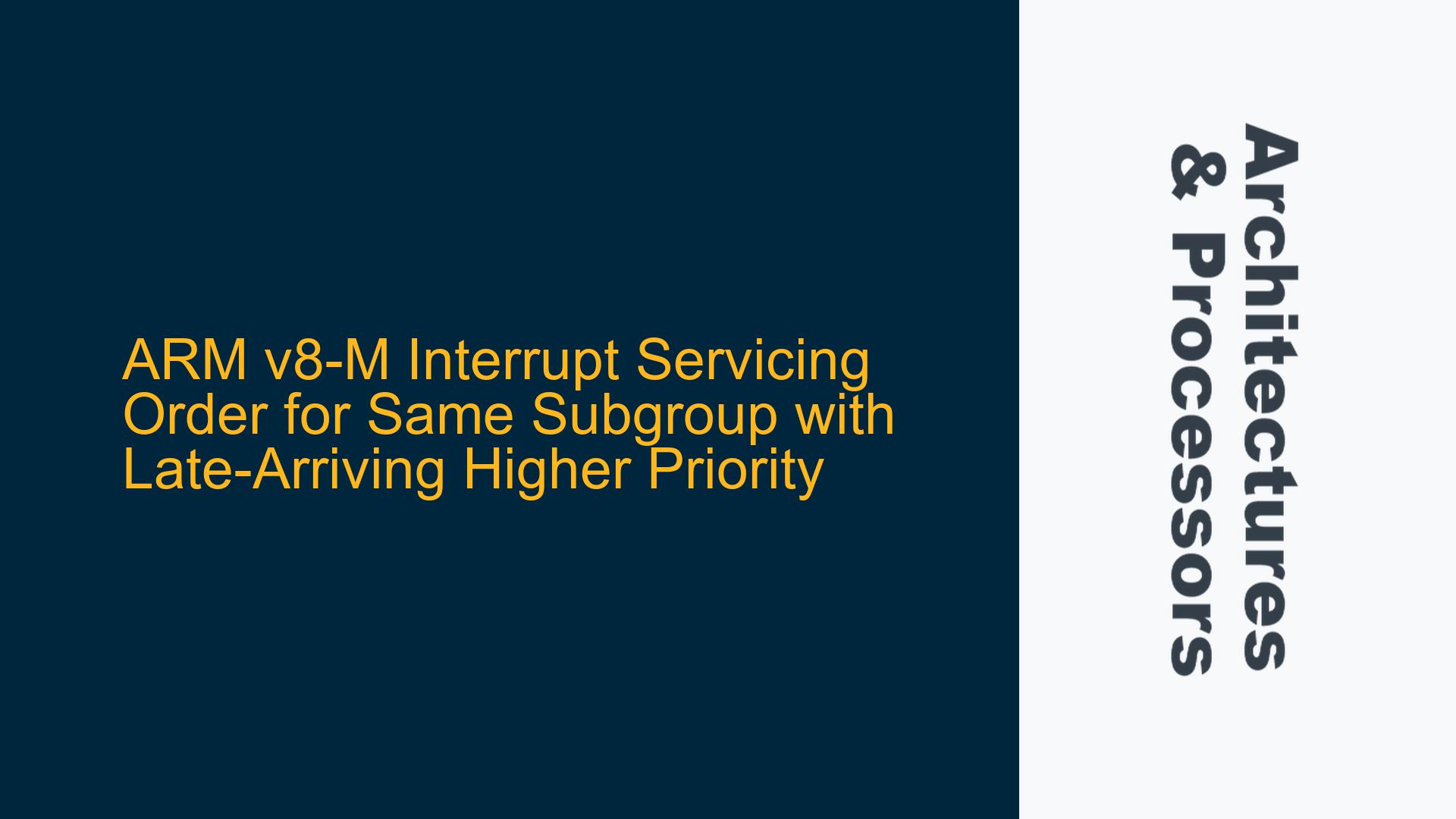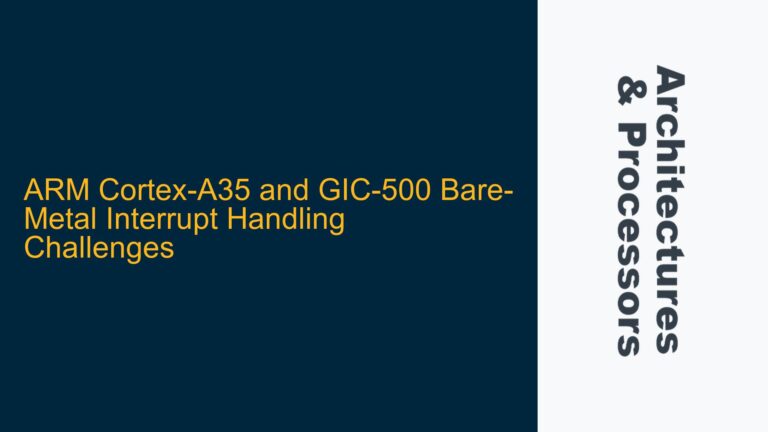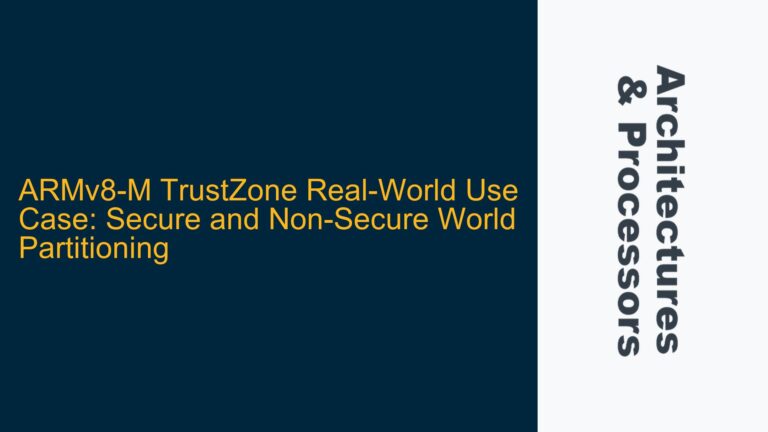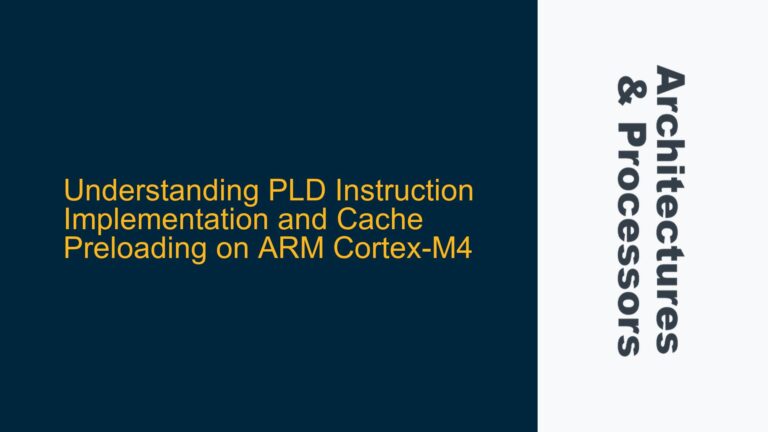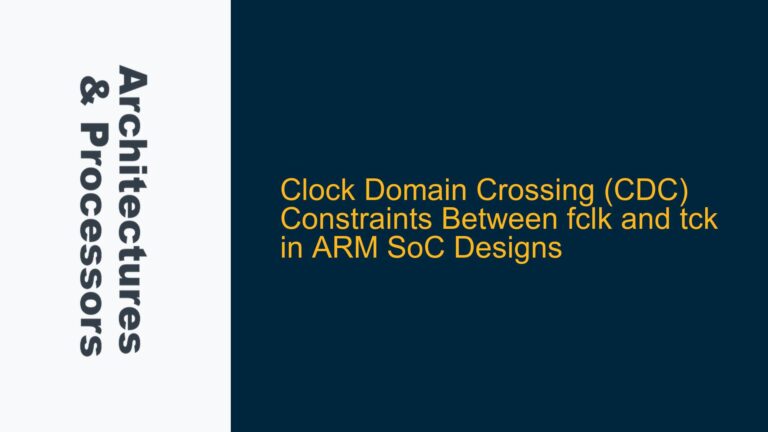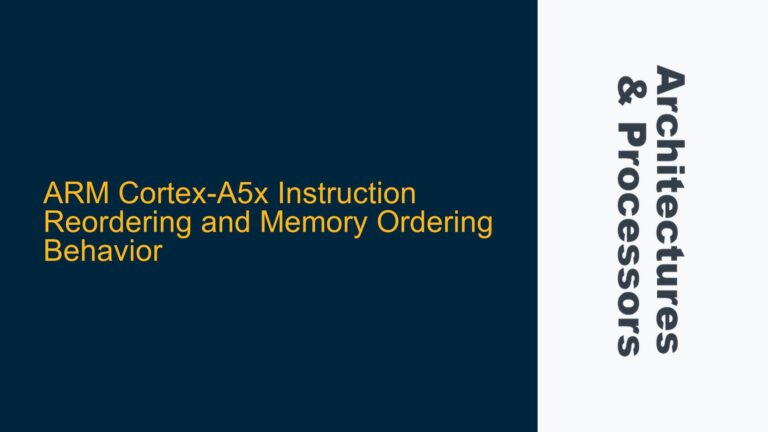ARM v8-M Interrupt Handling and Priority Subgroup Behavior
In ARM v8-M architectures, interrupt handling is a critical aspect of real-time system performance. The architecture provides a sophisticated mechanism for managing interrupts, including priority grouping and subgrouping, which allows developers to fine-tune the responsiveness of their systems. However, understanding the exact behavior of the interrupt controller, especially when multiple interrupts arrive at different times but share the same subgroup, can be challenging. This post delves into the intricacies of interrupt servicing order in ARM v8-M processors, focusing on scenarios where a higher-priority interrupt arrives later than others within the same subgroup.
The ARM v8-M architecture uses a nested vectored interrupt controller (NVIC) to manage interrupts. The NVIC supports priority grouping, which divides interrupt priorities into groups and subgroups. This grouping allows for a more granular control over interrupt handling, but it also introduces complexity when multiple interrupts with the same subgroup priority arrive at different times. The core issue revolves around determining which interrupt is serviced first when a higher-priority interrupt arrives after others within the same subgroup.
Priority Precedence and Subgroup Arbitration in ARM v8-M
The ARM v8-M architecture defines a clear hierarchy for interrupt handling. When multiple interrupts are pending, the NVIC evaluates their priorities to determine the order in which they should be serviced. The priority of an interrupt is determined by its priority level, which is divided into a group priority and a subgroup priority. The group priority is the most significant factor in determining the order of servicing, but within the same group, the subgroup priority is used to arbitrate between interrupts.
In the scenario where the processor is already servicing an interrupt and two new interrupts arrive, both with the same subgroup priority but one with a higher priority level, the NVIC must decide which interrupt to service next. According to the ARM documentation, the higher-priority interrupt will take precedence, even if it arrived later. This behavior ensures that the most critical tasks are handled first, regardless of their arrival time. However, this can lead to confusion if the developer assumes that the first-come-first-served principle applies within the same subgroup.
The NVIC also considers the interrupt number as a tiebreaker when multiple interrupts have the same priority level. Lower-numbered interrupts are given precedence over higher-numbered ones. This means that if two interrupts have the same group and subgroup priority, the one with the lower interrupt number will be serviced first. This behavior is crucial for developers to understand when designing systems with multiple interrupts that may have similar priority levels.
Implementing Correct Interrupt Handling with ARM v8-M NVIC
To ensure correct interrupt handling in ARM v8-M systems, developers must carefully configure the NVIC and understand the implications of priority grouping and subgrouping. The first step is to properly set the priority levels for all interrupts, taking into account both the group and subgroup priorities. This requires a thorough understanding of the system’s requirements and the relative importance of each interrupt.
When configuring the NVIC, developers should use the NVIC_SetPriority function to set the priority of each interrupt. This function takes into account the priority grouping configuration, which can be set using the NVIC_SetPriorityGrouping function. The priority grouping configuration determines how the priority level is divided into group and subgroup priorities. For example, if the priority grouping is set to 3, the top 3 bits of the priority level represent the group priority, and the remaining bits represent the subgroup priority.
In the scenario where a higher-priority interrupt arrives after others within the same subgroup, the NVIC will automatically preempt the currently executing interrupt if the new interrupt has a higher priority. This preemption ensures that the most critical tasks are handled promptly. However, developers must be aware of the potential for priority inversion, where a lower-priority task holds a resource needed by a higher-priority task, leading to delays in servicing the higher-priority interrupt.
To avoid priority inversion, developers should use techniques such as priority inheritance or priority ceiling protocols. These techniques ensure that a lower-priority task temporarily inherits the priority of a higher-priority task when it holds a shared resource. This prevents the higher-priority task from being blocked by the lower-priority task, ensuring timely interrupt servicing.
Another important consideration is the use of interrupt nesting. ARM v8-M supports nested interrupts, where a higher-priority interrupt can preempt a lower-priority interrupt that is currently being serviced. This allows for more responsive handling of critical tasks but requires careful management of the interrupt stack. Developers must ensure that the stack is large enough to handle the maximum possible depth of nested interrupts and that the stack is properly managed to avoid overflow.
In addition to configuring the NVIC, developers should also consider the impact of interrupt handling on system performance. Interrupts can introduce latency, especially if they are frequent or require significant processing time. To minimize latency, developers should keep interrupt service routines (ISRs) as short as possible and defer any non-critical processing to lower-priority tasks. This can be achieved by using techniques such as deferred procedure calls (DPCs) or task queues.
Finally, developers should thoroughly test their interrupt handling code to ensure that it behaves as expected under all conditions. This includes testing scenarios where multiple interrupts arrive at the same time, as well as scenarios where interrupts arrive while the processor is already servicing another interrupt. Testing should also include stress testing to ensure that the system can handle the maximum expected interrupt load without experiencing performance degradation or resource exhaustion.
In conclusion, understanding and correctly implementing interrupt handling in ARM v8-M systems requires a deep understanding of the NVIC and the priority grouping mechanism. By carefully configuring the NVIC, avoiding priority inversion, and minimizing interrupt latency, developers can ensure that their systems are responsive and reliable. Thorough testing is also essential to verify that the interrupt handling code behaves as expected under all conditions.
